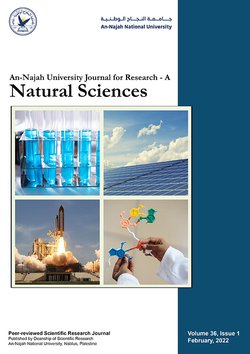Bio-mimicry in architecture: An explorative review of innovative solution toward sustainable buildings
Article info
2023-08-31
2024-05-14
2024-09-24
None - None
Keywords
- Innovation
- sustainability
- Gothic architecture
- Biomimicry
- Contemporary architecture
Abstract
Bio-mimicry is the imitation of the way nature solves problems. Architects and designers can utilize the ways nature follows to solve and address design problems. This science has helped humans in all life’s aspects, especially in the field of architecture. From the dawn of history, people constructed special buildings to suit their needs. At first, the building process was hard, and the structure was simple and rigid with rough details and they kept repeating the same form. Therefore, architects have been searching for answers for their building complexes, and they found that nature was the best source of solutions. The structures then took different forms, were decorated with deep and graceful ornaments, the walls became thinner, more openings were constructed and the buildings became more beautiful and had more dignity. So, nature imitation has become the best approach for architects to deliver bold ideas to their surroundings. We can still see how the ancient unique buildings are standing still until this time, as in some Egyptian temples, Greek and Roman columns, and Byzantine ornaments. Imitation of nature in buildings is either through aesthetic, structural, or sustainability aspects. In this research, we are exploring the potential of Bio-mimicry to support sustainability, using a number of case studies throughout history, classifying and analyzing them.
Salama, wasim, Al-Masri, A., Abdulsalam, M., & Hashaykeh, N. (2025). Bio-mimicry in architecture: An explorative review of innovative solution toward sustainable buildings. An-Najah University Journal for Research - A (Natural Sciences), 39(1). https://doi.org/10.35552/anujr.a.39.1.2256
[1] wasim Salama, A. Al-Masri, M. Abdulsalam, and N. Hashaykeh, “Bio-mimicry in architecture: An explorative review of innovative solution toward sustainable buildings,” An-Najah University Journal for Research - A (Natural Sciences), vol. 39, no. 1, Feb. 2025, doi: 10.35552/anujr.a.39.1.2256.
Salama, wasim, et al. “Bio-Mimicry in Architecture: An Explorative Review of Innovative Solution toward Sustainable Buildings.” An-Najah University Journal for Research - A (Natural Sciences), vol. 39, no. 1, Feb. 2025. Crossref, https://doi.org/10.35552/anujr.a.39.1.2256.
1.Salama wasim, Al-Masri A, Abdulsalam M, Hashaykeh N. Bio-mimicry in architecture: An explorative review of innovative solution toward sustainable buildings. An-Najah University Journal for Research - A (Natural Sciences) [Internet]. 2025 Feb;39(1). Available from: http://dx.doi.org/10.35552/anujr.a.39.1.2256
Salama, wasim, Aya Al-Masri, Mira Abdulsalam, and Nadine Hashaykeh. “Bio-Mimicry in Architecture: An Explorative Review of Innovative Solution toward Sustainable Buildings.” An-Najah University Journal for Research - A (Natural Sciences) 39, no. 1 (February 2025). https://doi.org/10.35552/anujr.a.39.1.2256.
Bio-mimicry in architecture: An explorative review of innovative solution toward sustainable buildings
معلومات المقال
2023-08-31
2024-05-14
2024-09-24
None - None
الكلمات الإفتتاحية
- Innovation
- sustainability
- Gothic architecture
- Biomimicry
- Contemporary architecture
الملخص
Bio-mimicry is the imitation of the way nature solves problems. Architects and designers can utilize the ways nature follows to solve and address design problems. This science has helped humans in all life’s aspects, especially in the field of architecture. From the dawn of history, people constructed special buildings to suit their needs. At first, the building process was hard, and the structure was simple and rigid with rough details and they kept repeating the same form. Therefore, architects have been searching for answers for their building complexes, and they found that nature was the best source of solutions. The structures then took different forms, were decorated with deep and graceful ornaments, the walls became thinner, more openings were constructed and the buildings became more beautiful and had more dignity. So, nature imitation has become the best approach for architects to deliver bold ideas to their surroundings. We can still see how the ancient unique buildings are standing still until this time, as in some Egyptian temples, Greek and Roman columns, and Byzantine ornaments. Imitation of nature in buildings is either through aesthetic, structural, or sustainability aspects. In this research, we are exploring the potential of Bio-mimicry to support sustainability, using a number of case studies throughout history, classifying and analyzing them.
Salama, wasim, Al-Masri, A., Abdulsalam, M., & Hashaykeh, N. (2025). Bio-mimicry in architecture: An explorative review of innovative solution toward sustainable buildings. An-Najah University Journal for Research - A (Natural Sciences), 39(1). https://doi.org/10.35552/anujr.a.39.1.2256
[1] wasim Salama, A. Al-Masri, M. Abdulsalam, and N. Hashaykeh, “Bio-mimicry in architecture: An explorative review of innovative solution toward sustainable buildings,” An-Najah University Journal for Research - A (Natural Sciences), vol. 39, no. 1, Feb. 2025, doi: 10.35552/anujr.a.39.1.2256.
Salama, wasim, et al. “Bio-Mimicry in Architecture: An Explorative Review of Innovative Solution toward Sustainable Buildings.” An-Najah University Journal for Research - A (Natural Sciences), vol. 39, no. 1, Feb. 2025. Crossref, https://doi.org/10.35552/anujr.a.39.1.2256.
1.Salama wasim, Al-Masri A, Abdulsalam M, Hashaykeh N. Bio-mimicry in architecture: An explorative review of innovative solution toward sustainable buildings. An-Najah University Journal for Research - A (Natural Sciences) [Internet]. 2025 Feb;39(1). Available from: http://dx.doi.org/10.35552/anujr.a.39.1.2256
Salama, wasim, Aya Al-Masri, Mira Abdulsalam, and Nadine Hashaykeh. “Bio-Mimicry in Architecture: An Explorative Review of Innovative Solution toward Sustainable Buildings.” An-Najah University Journal for Research - A (Natural Sciences) 39, no. 1 (February 2025). https://doi.org/10.35552/anujr.a.39.1.2256.

Why should you
Publish With Us?
An-Najah National University
Nablus, Palestine
Nablus, Palestine
- P.O. Box
- 7, 707
- Fax
- (970)(9)2345982
- Tel.
- (970)(9)2345560
- (970)(9)2345113/5/6/7-Ext. 2628
- [email protected]
- EIC
- Prof. Waleed Sweileh
An-Najah University Journal for Research - A (Natural Sciences) by An-Najah University, Nablus, Palestine is licensed under CC BY-NC 4.0
